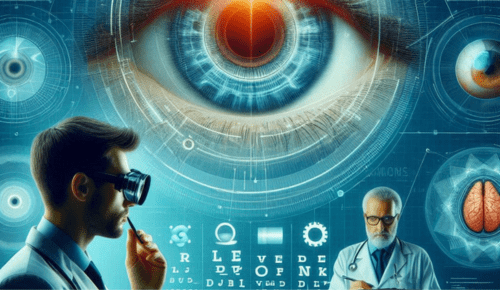
Many people underestimate the value of regular eye exams. Seeing an eye doctor regularly can reveal more than just changes in vision. Our eyes provide a window into overall health. By visiting an eye doctor in Austin, TX, you gain insight into both eye and general health. Eye exams can detect conditions like diabetes, high blood pressure, and even certain cancers. These exams are vital for early detection and prevention. An eye doctor uses specialized tools to look for subtle changes that might go unnoticed otherwise. Regular check-ups can catch issues early, leading to more effective treatment. Remember the rule of three: Protect your vision, understand your health, and ensure timely treatment. The benefits of regular eye exams extend beyond clear sight. They play a crucial role in maintaining overall well-being. Don’t wait until you notice a problem. Make eye exams part of your health routine today.
Beyond Vision: Health Insights from Eye Exams
Eye exams reveal much about your overall health. They can uncover signs of systemic diseases. For instance, high cholesterol may show up as yellowish plaques on your eyelids. Similarly, changes in the blood vessels can indicate high blood pressure. Early detection is key to managing these conditions effectively. The earlier a problem is discovered, the better the chances of managing it well. Regular eye exams provide this opportunity.
The Role of Technology in Eye Exams
Modern technology allows eye doctors to see more than ever before. With tools like digital retinal imaging and optical coherence tomography, doctors can examine the retina in detail. These tools help detect issues like glaucoma or retinal detachment. Detecting these conditions early often makes treatment easier and more effective. Technology advances make eye exams more comprehensive and informative.
Frequency of Eye Exams
How often should you get an eye exam? It depends on age, health, and risk factors. Here is a simple guide:
| Age Group | Recommended Frequency |
| Children (3-18 years) | Every 1-2 years |
| Adults (19-64 years) | Every 1-2 years |
| Older Adults (65+ years) | Annually |
Those with diabetes or a family history of eye disease should consider more frequent exams. Your eye doctor can offer advice based on your specific situation. For more detailed guidelines, the American Academy of Ophthalmology provides comprehensive recommendations.
Common Eye Conditions Detected
Eye exams can detect several common conditions, including:
- Glaucoma: Increased eye pressure can lead to vision loss.
- Macular Degeneration: Deterioration of the central part of the retina.
- Cataracts: Clouding of the eye lens, affecting vision clarity.
Early detection through regular exams can prevent or slow down the progression of these conditions. Proper management improves the quality of life and maintains independence.
Eye Health and Lifestyle
Maintaining eye health is about more than just exams. Lifestyle plays a significant role. A balanced diet, regular exercise, and protective eyewear contribute to healthy eyes. Smoking cessation also reduces the risk of cataracts and macular degeneration. An eye doctor can provide personalized tips for eye care based on your lifestyle and health history.
The Broader Impact of Eye Health
Good vision is essential for everyday activities like driving, reading, and using technology. It impacts education, employment, and social interactions. Regular eye exams ensure that vision problems do not hinder these aspects of life. They support independence and enhance the quality of life.
Conclusion
Regular eye exams are a crucial part of maintaining overall health. They offer insights into systemic conditions and support early intervention. By making eye exams a routine part of healthcare, individuals can safeguard their vision and general well-being. Don’t wait for symptoms to appear. Schedule an eye exam today and take control of your health.










